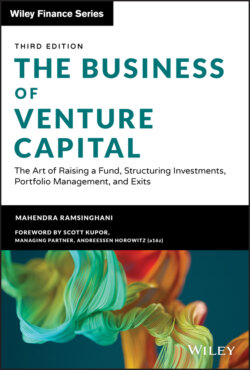Читать книгу The Business of Venture Capital - Mahendra Ramsinghani - Страница 34
ADJACENT ENTRY POINTS
ОглавлениеGetting in to a top-tier venture fund is tough. Yet, practitioners have found ways to meet their career goals by starting in an allied universe. These pathways are not as competitive, and each one has its pros and cons. As they say, there is no straight path into venture capital.
About 6 to 8 percent of all venture capital investments in United States come from corporate venture capitalists (CVCs). Besides a financial return, corporations invest in startups to gain a view of the newest new thing. Corporate venture capital funds are sponsored by the mother ships to help generate financial returns. Allied objectives for CVCs include identifying novel technologies to enhance revenue streams and amplify a corporation's competitive position. Other corporate objectives include validation of new market segments as well as leveraging relationships between the corporate venture capital portfolio and corporate business units. About 60 percent of corporations invest in venture funds as LPs, and 90 percent of CVCs invest directly in startups. Getting in a corporate venture capital firm of repute such as Google Ventures or Intel Capital can be a strong starting point for practitioners. Angel networks also offer excellent opportunities to entry-level candidates and are forgiving playgrounds where skills can be honed.
Opportunities in the institutional investor (LP) universe can be a starting point. Pension funds — both private and public — Fund-of-Funds, university endowments, foundations, and insurance companies have to deploy assets in the universe of venture funds. Family offices also offer a strong starting point for practitioners. These are addressed in greater detail in Chapter 8.
Investment banking firms, law firms, marketing firms, and even journalists have seen talent transition into venture capital.
